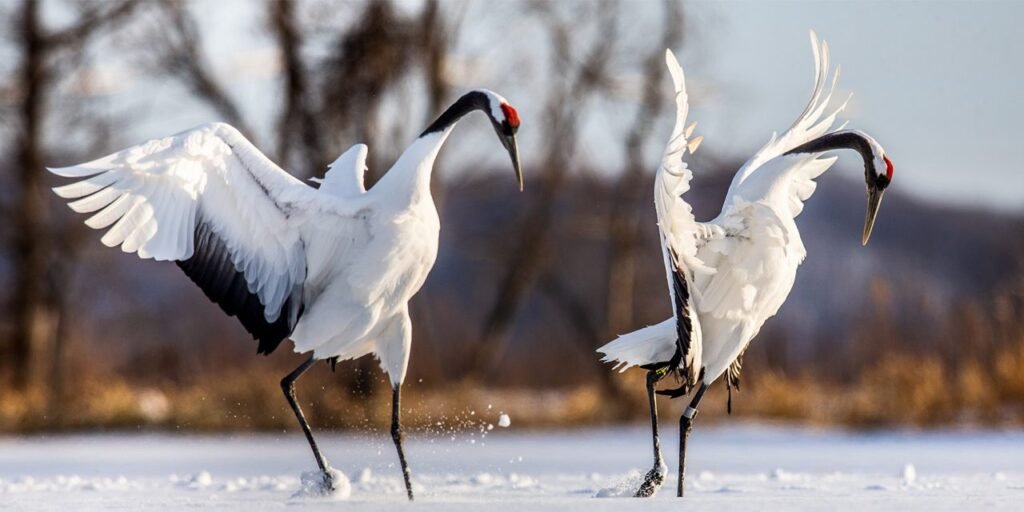
Animals have long fascinated us not only for their beauty and behavior but also for the extraordinary ways they communicate with one another. While we often think of animal communication as vocalizations like bird songs or wolf howls, the animal kingdom holds a vast array of surprising and sophisticated methods of connection. For years, I’ve immersed myself in studying and observing these unique methods, marveling at the ingenious ways animals share messages, warn of danger, and even express affection. Each discovery feels like uncovering a hidden language, and I’m here to share a glimpse of these incredible worlds.
I still remember my first encounter with an animal communication marvel: the elephants of Amboseli National Park in Kenya. Watching these gentle giants communicate through low-frequency rumbles and subtle gestures showed me the depth and subtlety of animal interactions. Since then, I’ve sought out unique communication strategies across species. Today, I’ll take you into the lives of creatures like elephants, bees, and even octopuses, revealing their unusual methods of communication that challenge our understanding of intelligence and emotion in the wild.
Let’s dive in and uncover how scent, touch, body movements, and even electric fields become the invisible threads of conversation in the animal kingdom. These insights may deepen your appreciation for the incredible worlds animals inhabit and help you see them not as silent beings, but as creatures with rich, nuanced ways of connecting.
1. Elephants and Infrasound: Communicating Over Miles

Understanding Infrasound Communication
Elephants are renowned for their ability to communicate across vast distances using infrasound—sound waves that fall below the range of human hearing. These low-frequency rumbles, traveling up to 10 miles, allow elephants to warn each other of danger, locate each other, and even form emotional bonds from afar. The matriarch of a herd often initiates this communication, sending out signals to guide her family.
How It Feels to Witness Infrasound
Once in Amboseli, I watched as a mother elephant lifted her trunk and let out a rumble that resonated through the air. It was like a pulse you felt more than heard. Moments later, a distant reply came from her sister’s herd, and in a matter of hours, the two families reunited. Their communication felt more like a dance—a deep, familial connection that spoke volumes without words.
Infrasound’s Impact on Social Dynamics
Elephants use infrasound to maintain social cohesion, especially in fragmented environments. In times of drought, for example, herds communicate to find scarce water sources, a testament to their resourcefulness. Studying this form of communication reveals the intricate social lives of elephants, where cooperation and emotional support are paramount.
2. Bees and the Waggle Dance: Directing the Hive

The Complexity of the Waggle Dance
Honeybees, despite their small size, use one of the most sophisticated nonverbal forms of communication known as the “waggle dance.” When a worker bee finds a rich food source, it returns to the hive and performs a dance, shaking its body in a figure-eight pattern. The angle and duration of this dance encode the distance and direction of the nectar source relative to the sun.
Witnessing the Dance in Action
I once spent a summer with a beekeeper who allowed me to observe this phenomenon up close. Watching the bees dance with such precision was mesmerizing. Each subtle movement was a tiny map, a guide to survival that the hive members relied on. The entire hive buzzed with anticipation, each bee tuned to the rhythms of its fellow forager’s dance.
Implications of the Waggle Dance for Hive Health
This dance ensures that the hive operates efficiently, focusing energy on the most bountiful sources of nectar and pollen. In times of scarcity, it can be the key to the colony’s survival, showing just how interdependent each bee is on one another’s precise communications.
3. Octopuses and Color Shifts: Visual Language of the Deep
How Octopuses Use Chromatophores
Octopuses are masters of disguise, changing colors to blend in with their surroundings, but they also use color for communication. Through specialized skin cells called chromatophores, octopuses can rapidly alter their appearance, flashing patterns to signal danger, assert dominance, or express curiosity.
Personal Encounter with an Expressive Octopus
Diving in the Aegean Sea, I came face-to-face with a curious octopus. It shifted from a sandy brown to a deep red as I approached, signaling caution. After a few moments, as I stayed still, its colors softened, and it extended an arm toward me. In that moment, we communicated—a truce of sorts, negotiated entirely through color and movement.
The Science Behind Octopus Communication
Beyond signaling immediate emotions, octopuses may also use color to bond with mates or ward off rivals. This complex use of chromatophores suggests a surprising level of social awareness for a typically solitary animal, challenging our understanding of what we call “intelligent” behavior.
4. Ants and Chemical Trails: Mapping the World with Scent

Scent Marking with Pheromones
Ants are famously diligent workers, relying heavily on scent trails to communicate. They secrete pheromones to mark paths to food sources, guide fellow workers, and signal alarm. When an ant finds food, it lays down a trail that other ants follow, creating a highway of activity that leads back to the nest.
A Memorable Pheromone Trail Encounter
While hiking in Costa Rica, I saw an army of leafcutter ants moving in perfect unison. Following their line, I realized they were communicating purely by scent. Even when obstacles like fallen branches appeared, the ants regrouped and re-marked their trail, determined to bring back their bounty.
Why Pheromones Are Essential for Colony Survival
Pheromone trails are essential for ants because they allow efficient food collection and defense. When the scent fades, ants know it’s time to seek new resources or regroup, ensuring no effort is wasted. This method showcases their communal dedication and remarkable efficiency.
5. Dolphins and Signature Whistles: Personalized Calls in the Ocean
The Concept of Signature Whistles
Dolphins are among the few species that use unique vocalizations, or “signature whistles,” akin to names. Each dolphin develops its own distinct whistle that serves as an identifier. Mothers call to their young using these whistles, and dolphins even recognize each other’s signatures years after being separated.
The First Time I Heard a Dolphin’s Call
Years ago, while on a research trip in the Gulf of Mexico, I heard a dolphin calling to its calf. The sound echoed over the waves, a distinct melody in the ocean’s white noise. Observing this, I realized just how complex dolphin society must be, with each whistle representing an individual’s identity.
Social Significance of Signature Whistles
Signature whistles create a complex social network where dolphins can keep track of one another’s locations, family ties, and friendships. In the ocean, this connection is vital for survival and bonding, giving each dolphin a role in its community and deepening their social structures.
Conclusion
From the rumbling infrasounds of elephants to the chemical trails of ants, these unique communication methods reveal the richness and diversity of animal intelligence. Animals don’t need words; they have evolved distinct and fascinating ways of connecting that serve as lifelines for survival, social cohesion, and family bonds. Observing these methods up close has taught me that communication isn’t limited to spoken words—it’s as varied as life itself.
As we uncover these unusual methods, we’re reminded of the complexity of the natural world and the importance of preserving it. Every discovery brings us closer to understanding the interconnected web of life, inspiring us to respect and protect the diverse ways animals thrive. Whether it’s through vibrations, scents, or colors, animals teach us that communication is everywhere if we only take the time to look.












